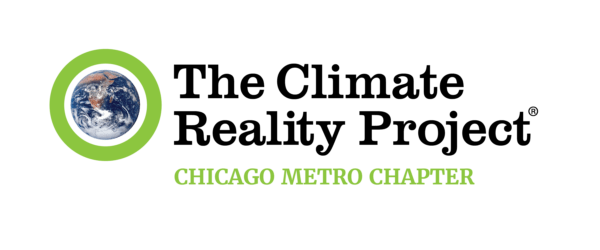
A contribution to our ongoing series, “What We Eat.”
By Cynthia Linton
I grew up on meat and potatoes – along with a cooked fresh vegetable or two (not crazy about those) and a sweet dessert. I think that was par for the course in the ’40s and ’50s.
It wasn’t until 1992 that the USDA developed the food pyramid and later than that when we all became aware of what was called a “heart healthy” diet. In those days, that meant less cholesterol, therefore, less beef, whole milk, eggs and butter. (Now sugar is the killer, not fat.)
Many decades later, I was still eating the same diet with meat as the staple. I still didn’t much like vegetables. When my granddaughters became vegetarians, I thought they were going through a “phase.”
Fast forward to about five years ago, when a series of events impacted my outlook.
Vegetarian eating boosted my energy
I went with a friend to a fitness spa in Baja for a week and found that I could exercise several hours a day on the mandated vegetarian diet, which included eggs, some dairy and tiny bits of seafood now and then. I was amazed. I had always assumed meat was necessary for strength.
Please don’t kill the cute little pigs!
Two years later, I visited a pig farm while on a culinary tour in France. The farm was touted as humane, but it broke my heart to see the huge, fat sows lying in the grass, trying to get a little shade, with a dozen curly-tailed piglets climbing all over them. The babies, of course, were being raised for sale (this little piggy went to market!). Then, to make it even worse, they took us inside for a helping of bacon. (No, thanks.)
We were told the moms are impregnated ONLY three times a year, compared with five or six for those at factory farms. I clearly remember saying aloud, “I think I’m going to become a vegetarian.”
Not long after that in June 2017, I attended my Climate Reality Leadership training, and my commitment to the climate went from about a 7 to a 10. Again, we were fed vegetarian lunches. No problem.
So many wonderful choices of protein
Soon after, I saw a poster of plant-based sources of protein, animated with little eyes to make them cute and appealing. I was surprised by how many were foods I liked to eat. I shared the chart on Facebook, writing that I could be perfectly happy with a diet of peanut butter, avocados, hummus and Caesar salad. And I didn’t even mention the chocolate! These were the things I was eating just about every day anyway.
I could be perfectly happy with a diet of peanut butter, avocados, hummus and Caesar salad. And I didn’t even mention the chocolate! These were the things I was eating just about every day anyway.
Then I read two articles: one about animal agriculture’s adverse impact on the climate, land, water and biodiversity; the other about the inhumane treatment of the animals at industrial farms.
That did it. The tipping point had arrived.
Plus vegans have a lower carbon footprint
I now have the satisfaction of lowering my climate footprint. Project Drawdown tells us that vegetarians reduce their emissions from diet by about 63% and vegans by about 70%. But I think my main reason for making the change is knowing how animals are mistreated at factory farms.
I still eat some fish and, once in a while, cheat with poultry. If invited out (not much of that in the past year and a half), I’m a good girl and eat what I’m served.
But overall, my diet is plant-based and I’m happy with that. I really don’t miss beef or lamb (once a favorite). And when I’m tempted by bacon, I remember those little French pigs being raised for slaughter.
I confess I’m still not crazy about vegetables, and don’t like some of the vegan favorites, like kale, lentils and quinoa, so I don’t see ever going full vegan. But I do love salads and raw veggies and often steam fresh asparagus, broccoli or green beans. On days when I eat a lot of veggies and fruits, I notice that I feel more energetic.
Food choice is personal, so find what’s right for you
What we eat is a very personal choice. Toddlers will fight major battles over control of food. I don’t judge anyone who wants to stick with meat or, for that matter, anyone who has gone vegan. I’ve found what’s right for me —even if it took almost eight decades and a series of serendipitous situations to get me here!
To read other articles in our ongoing series, “What We Eat,” go to:
Eating the Rainbow and the introduction to our series, What We Eat: A conversation about plant-based eating.
If you’re interested in contributing essays or recipes to our series, please contact us Jane at jayynne@gmail.com.

Cynthia Linton is retired as a journalist and professor at the Medill School of Journalism at Northwestern University. She is a long-time activist who was trained by The Climate Reality Project in 2017 and is now chair of the Chicago Metro Chapter. She is grandmother or step-grandmother to six, half of whom are vegetarians.



One Response
Dear Cynthia Linton:
I enjoyed and connected with your blog post on eating a plant based diet. I am a Climate Reality Leader, trained during the first remote training in 2020, and a member of the WestMI chapter. I heard from Therese Post Hanlon, our chair, that the Chicago Chapter might be interested in partnering with us to save the Great Lakes and shutdown Enbridge Line 5. We’d love to speak with you about this possibility, have an introductory presentation ready that we’ve used for several MI chapters and wrote a blog post about Line 5. My email is holcomb6@cvm.msu.edu, phone 517-719-4589. Many thanks Sue Holcombe